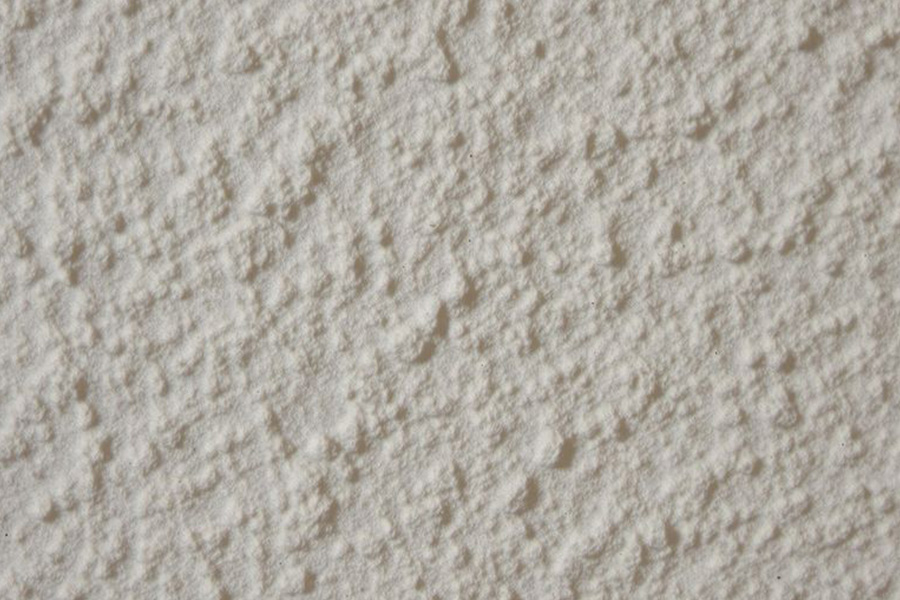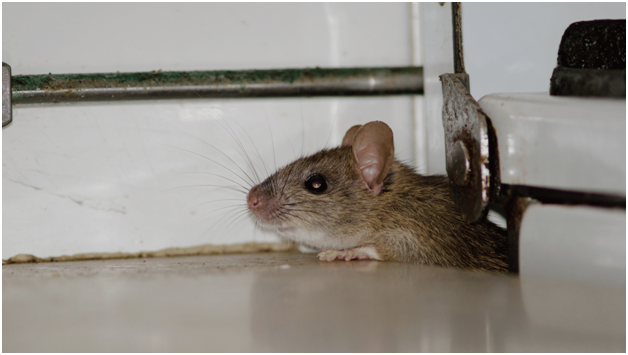The Rise of Asbestos Use in Construction
Before drywall became the standard for interior walls, builders relied on lath and plaster, a method that was labor-intensive and expensive. However, the invention of drywall in 1916 by the United States Gypsum Company revolutionized the industry. By the 1940s, during the post-WWII building boom, drywall became the go-to material for both residential and commercial construction. Manufacturers began incorporating asbestos into drywall for its fireproofing and soundproofing properties. This “miracle material” was also valued for its ability to strengthen drywall while keeping it lightweight.
Why Asbestos Was Added to Drywall
The decision to add asbestos to drywall wasn’t random. Asbestos fibers offered several advantages at the time:
- Fire resistance: This was crucial for reducing fire hazards in homes and buildings.
- Durability: The fibers reinforced the drywall, making it less prone to cracking.
- Cost-effectiveness: Asbestos was relatively inexpensive and widely available, which made it attractive to manufacturers.
Unfortunately, these perceived benefits came at a significant cost to human health, a fact that wasn’t fully understood until decades later.
The Decline of Asbestos in Building Materials
By the late 1970s, the tide began to turn against asbestos. Mounting evidence linked asbestos exposure to severe health risks, including mesothelioma and lung cancer. In 1977, key regulations were introduced to limit asbestos use, and by the 1980s, its inclusion in drywall was largely phased out. Companies like National Gypsum Company, which had been major players in the asbestos drywall market, faced lawsuits and the establishment of trust funds to compensate victims. Today, asbestos-containing drywall is no longer manufactured, but its legacy lingers in older buildings, including some rehab facilities, where it poses ongoing risks.
Health Risks Associated With Asbestos in Drywall
How Asbestos Exposure Occurs
Asbestos in drywall can become a health hazard when the material is disturbed, releasing tiny fibers into the air. These fibers are so small that they can be inhaled without notice. Common scenarios include renovations, demolitions, or even minor wear and tear in older homes. Once inhaled, the fibers lodge themselves in the lungs or other parts of the respiratory system, where they can remain for decades, causing damage over time. People working in construction or addiction rehab facilities housed in older buildings may unknowingly be exposed if asbestos-containing materials are not properly managed.
Common Illnesses Linked to Asbestos
Exposure to asbestos fibers is directly linked to several serious health conditions. The most well-known is mesothelioma, a rare but aggressive cancer affecting the lining of the lungs or abdomen. Other illnesses include asbestosis, a chronic lung disease caused by scarring of lung tissue, and lung cancer. These conditions often take years to develop, making early exposure particularly dangerous. Even minimal exposure can result in long-term health consequences.
Long-Term Effects of Asbestos Exposure
The long-term impact of asbestos exposure can be devastating. Many individuals don’t experience symptoms until decades after initial exposure. Chronic coughing, shortness of breath, and chest pain are just the beginning. As the diseases progress, they can severely limit one’s ability to perform daily activities, leading to a diminished quality of life. Additionally, those diagnosed with asbestos-related illnesses often face significant medical costs and emotional strain, further emphasizing the importance of professional abatement and early detection. For anyone concerned about asbestos exposure, consulting a professional is a critical first step to protecting their health.
Identifying Asbestos in Your Drywall
Signs Your Drywall May Contain Asbestos
If your home was built or renovated between 1930 and 1980, there’s a chance asbestos could be lurking in your drywall. Older homes are particularly at risk, especially if they have not undergone significant updates. Look for these indicators:
- Drywall sheets sized 4×8 feet, a standard during the asbestos era.
- Joint compounds applied to seams, especially if they extend more than 18 inches wide.
- Degraded or unlabeled materials showing wear or damage.
Testing Methods for Asbestos in Drywall
Testing is the only reliable way to confirm the presence of asbestos. Here’s how to approach it:
- Hire a certified asbestos testing company to collect samples safely.
- Avoid disturbing the drywall yourself, as this can release harmful fibers.
- Use specialized labs to analyze the samples for asbestos content.
Remember, even if the material appears intact, it’s better to err on the side of caution.
When to Consult a Professional
If you suspect asbestos, it’s essential to act responsibly. Evoke Wellness recommends consulting licensed professionals for both testing and removal. Avoid DIY attempts, as improper handling can increase exposure risks. Professionals can:
- Assess the condition of your drywall and surrounding materials.
- Provide a clear plan for removal or containment.
- Ensure compliance with safety regulations.
In all cases, prioritize health and safety by leaving asbestos-related tasks to the experts.
Components of Drywall That May Contain Asbestos
Joint Compounds and Their Risks
Joint compounds, often referred to as drywall mud, were a common source of asbestos in construction materials from the 1930s to the 1980s. These compounds were used to seal seams between drywall panels and create a smooth surface for painting or wallpapering. Asbestos was added to joint compounds to improve strength and fire resistance, but this also made them hazardous once disturbed. The risk increases during renovations or demolition when the compound becomes airborne. Homeowners should be cautious, especially with older walls, as asbestos-containing joint compounds may have been applied not only to seams but also as a skim coat over entire walls.
Drywall Tape and Asbestos Content
Drywall tape, typically made of paper, was another material that sometimes contained asbestos. Asbestos was included in the tape to enhance its durability and resistance to wear. While less common than its use in joint compounds, asbestos-containing drywall tape can still pose a threat when it deteriorates or is removed during remodeling projects. If the tape appears worn or damaged, it’s essential to handle it carefully and consider professional testing to confirm its safety.
Other Materials in Drywall Systems
Beyond joint compounds and tape, other components of drywall systems may also contain asbestos. For instance, some drywall boards themselves were manufactured with asbestos, though this was less frequent. Additionally, skim coats, patching materials, and even certain adhesives used in drywall installations could include asbestos. Identifying these materials accurately often requires laboratory testing, especially in older buildings where labeling may not be present. This is why consulting a professional is recommended when dealing with potentially hazardous materials.
Regulations and Bans on Asbestos in Drywall
Key Dates in Asbestos Legislation
The journey to regulate asbestos in drywall has been long and complex. One pivotal moment occurred in 1977 when the Consumer Product Safety Commission officially banned asbestos in joint compounds and drywall tape. Despite this ban, products containing asbestos often remained in circulation until the early 1980s due to stockpiles that manufacturers and suppliers continued to sell. This means that homes and buildings constructed before 1990 may still contain these hazardous materials. Understanding these key dates is essential for both homeowners and professionals in the construction industry.
Impact of the 1977 Ban on Drywall
The 1977 ban marked a turning point in how asbestos was used in construction materials. Before this, asbestos was widely regarded as a “miracle mineral” due to its fire resistance and durability. However, the ban forced manufacturers to find alternatives, leading to significant changes in drywall production. While the ban aimed to protect public health, it also left a legacy of asbestos-containing materials in older structures, creating ongoing challenges for abatement and safety compliance.
Current Regulations for Asbestos in Construction
Today, federal regulations, including those enforced by the Environmental Protection Agency (EPA), strictly control the use and handling of asbestos. For instance, the EPA mandates that any suspected asbestos-containing materials in buildings must be tested by certified professionals. Additionally, proper abatement procedures must be followed to prevent the release of harmful fibers into the air. To learn more about these regulations, you can explore asbestos-related laws and regulations enforced by the EPA. These guidelines are crucial for ensuring safety during renovations or demolitions involving older drywall materials.
Steps to Take If You Suspect Asbestos in Your Drywall
Safety Precautions to Follow
If you think your drywall might contain asbestos, the first step is to avoid disturbing it. Damaged materials are more likely to release dangerous asbestos fibers into the air. Do not drill, cut, or sand the drywall, as these actions could release the fibers. Instead, keep the area undisturbed and ensure proper ventilation.
Here are some immediate precautions you can take:
- Refrain from touching or moving the drywall.
- Seal off the area to prevent anyone from accidentally disturbing it.
- Avoid using fans or air conditioning in the affected space to minimize the spread of fibers.
Hiring Certified Asbestos Inspectors
To confirm whether your drywall contains asbestos, you’ll need to hire a certified inspector. These professionals have the tools and expertise to safely collect and analyze samples. Make sure to:
- Verify the inspector’s credentials and licensing.
- Request a detailed report outlining the findings.
- Avoid hiring the same company for both testing and removal to maintain objectivity.
Options for Asbestos Removal
If asbestos is confirmed, removal is not something you should tackle on your own. Instead, hire a licensed asbestos abatement team. They will follow strict protocols to ensure safe removal and disposal. The process typically includes:
- Setting up containment zones to prevent fiber spread.
- Using specialized equipment to remove and bag the materials.
- Disposing of the waste at approved facilities.
For small removal tasks, such as less than one square meter of drywall, some states may allow homeowners to perform the work themselves. However, this requires strict adherence to safety guidelines, including wearing a respirator with P100 filters and disposable coveralls. For more on protective measures, check out safety measures for small drywall removal jobs.
Companies Linked to Asbestos in Drywall Production
Major Manufacturers of Asbestos Drywall
Throughout much of the 20th century, several companies became synonymous with the production of drywall that contained asbestos. These firms included well-known names such as National Gypsum Company, Kaiser Gypsum, and Bestwall Gypsum Company. Their products were widely used in both residential and commercial construction due to the fire-resistant and durable qualities asbestos added to drywall. However, this came at a significant cost to public health, as asbestos exposure led to numerous cases of illness requiring extensive rehab and treatment.
Historical Use of Asbestos by Companies
The incorporation of asbestos into drywall materials wasn’t a random decision. Companies sought to enhance the strength, fireproofing, and soundproofing properties of their products. From the 1940s to the late 1970s, manufacturers like Kelly-Moore Paint Company and Hamilton Materials, Inc., heavily relied on asbestos to meet these demands. Unfortunately, the long-term health consequences of this practice were largely ignored, leaving workers and consumers vulnerable to asbestos-related diseases.
Legal Cases Involving Asbestos Exposure
Over the years, numerous lawsuits have been filed against these manufacturers. Victims of asbestos exposure, including construction workers and homeowners, have sought compensation for illnesses like mesothelioma and asbestosis. Legal battles have revealed that many companies were aware of the risks but failed to warn the public. These cases have not only highlighted the need for stricter regulations but also underscored the importance of professional rehab and ongoing treatment for those affected.
Alternatives to Asbestos-Containing Drywall
Modern Drywall Materials
Modern drywall options have evolved significantly since the era of asbestos use. Today, manufacturers prioritize safety and sustainability, producing materials that are free from harmful substances. Gypsum-based drywall, for instance, is a popular choice. It is fire-resistant, lightweight, and easy to work with. For added durability, some gypsum boards come reinforced with fiberglass rather than asbestos. These materials maintain the same benefits of traditional drywall without the associated health risks.
Eco-Friendly Wallboard Options
For those looking to minimize their environmental impact, eco-friendly wallboard alternatives are widely available. These products often incorporate recycled materials, such as reclaimed wood fibers or recycled paper. Some options even use plant-based binders to reduce reliance on synthetic chemicals. Examples include:
- Hempcrete panels: Made from hemp fibers and lime, offering excellent insulation and durability.
- Cement board: A robust alternative often used in areas prone to moisture, such as bathrooms.
- Magnesium oxide boards: Lightweight and resistant to fire, mold, and pests.
These options not only provide safety but also contribute to sustainable construction practices.
Cost Comparisons of Safe Alternatives
When considering alternatives to asbestos-containing drywall, cost is often a deciding factor. While traditional gypsum drywall remains one of the most affordable options, eco-friendly and specialized materials may come with a higher price tag. However, the long-term benefits—such as improved safety, durability, and environmental sustainability—often outweigh the initial investment. Homeowners and businesses should weigh these factors carefully to choose the best material for their needs.
DIY Projects and Asbestos Risks
Why DIY Asbestos Removal Is Dangerous
Many homeowners might think tackling asbestos removal themselves is a cost-effective option, but the risks far outweigh the savings. Asbestos fibers are microscopic and can easily become airborne during removal, leading to severe health hazards. Inhaling these fibers can cause illnesses like asbestosis, lung cancer, and mesothelioma. Additionally, improper handling could spread contamination throughout the home, making it unsafe for everyone.
Safe Practices for Home Renovations
If you suspect asbestos in your drywall during a DIY home project, take these precautions to minimize exposure:
- Avoid drilling, cutting, or sanding any materials that may contain asbestos.
- Always wear a respirator with P100 cartridges and disposable coveralls to protect yourself.
- Dampen the area with a water-detergent solution to reduce dust while working.
- Work in a well-ventilated space and isolate the area to prevent fiber spread.
Still, even with these measures, most experts strongly advise against DIY asbestos removal. Instead, focus on smaller tasks like repainting or sealing areas if the material is undamaged.
When to Call in Experts for Asbestos
When dealing with more than one square meter of drywall or if the material is deteriorating, hiring licensed professionals is the safest route. Certified asbestos abatement teams have the tools and expertise needed to remove and dispose of asbestos safely. They also ensure compliance with local laws, so you don’t face legal issues. For homeowners considering renovations, professional removal can also prevent further complications down the line.
For example, DIY asbestos removal often leads to accidental exposure, which can have lifelong consequences. Professionals can assess the situation and determine whether encapsulation or full removal is the best option. By relying on certified experts, you safeguard your health and your home.
The Role of Asbestos in Joint Compounds
How Joint Compounds Were Used
Joint compound, often referred to as drywall mud, was a key material in construction projects, especially for finishing drywall seams. Between the 1930s and 1980s, asbestos was commonly added to joint compounds to improve their performance. This material was applied wet, allowed to dry, and then sanded to create a smooth surface for painting. Unfortunately, this process often released harmful asbestos fibers into the air, posing significant health risks to workers and homeowners.
Health Risks of Asbestos in Joint Compounds
The inclusion of asbestos in joint compounds created serious health concerns. Inhaling asbestos fibers, especially during sanding or demolition, can lead to severe respiratory illnesses. Common illnesses include asbestosis, lung cancer, and mesothelioma. Even short-term exposure has been linked to long-term health effects. Individuals working with joint compounds, such as painters, laborers, and maintenance workers, were particularly at risk.
Identifying Asbestos in Joint Compounds
If your home or building was constructed before the 1980s, there’s a chance the joint compounds used contain asbestos. Look for signs like unlabelled or deteriorating materials. In some cases, asbestos-containing compounds were used not just for seams but also as a skim coat over entire walls. Testing by a professional is the safest way to confirm its presence. For more details on safety measures, consult the EPA’s guidance on asbestos in plaster and wall systems.
Asbestos in Other Wall and Ceiling Materials
Ceiling Tiles and Asbestos Risks
Ceiling tiles were once a common material that contained asbestos, particularly in buildings constructed before the 1980s. These tiles were valued for their fire resistance and soundproofing qualities. However, asbestos fibers within the tiles can become airborne if they are disturbed during renovations or repairs. This poses a risk of inhalation, which can lead to serious health problems. Homeowners should be cautious when handling older ceiling tiles and consider professional testing to determine if asbestos is present.
Plaster and Asbestos Content
Plaster, especially in homes built before the mid-20th century, may also contain asbestos. Asbestos was often mixed into plaster to enhance its durability and resistance to heat. Over time, as plaster ages and deteriorates, the asbestos fibers can become exposed. Signs of wear, such as cracking or crumbling plaster, should be addressed immediately. It is advisable to consult an expert to assess the material and recommend safe handling or removal procedures.
Other Interior Materials to Watch For
In addition to ceiling tiles and plaster, other interior materials may harbor asbestos. Some of these include:
- Popcorn ceilings, which were popular for their textured appearance.
- Texture compounds used for decorative wall finishes.
- Insulation materials found behind walls or above ceilings.
Each of these materials can release asbestos fibers if disturbed, so it is critical to handle them with care. For example, Artex coatings, a type of textured finish, may contain small amounts of asbestos but are generally considered lower risk due to the fibers being well bonded. Still, any work involving these materials should be approached cautiously, and professional guidance is strongly recommended to minimize exposure risks.
The Importance of Professional Asbestos Abatement
What Is Asbestos Abatement?
Asbestos abatement refers to the process of identifying, containing, and removing asbestos from a property to prevent exposure to its hazardous fibers. This task is highly specialized and requires adherence to stringent safety protocols. Professionals use advanced equipment and techniques to ensure that asbestos is handled and disposed of properly, minimizing the risk of contamination.
Benefits of Hiring Professionals
- Expertise in Safety Protocols: Licensed abatement professionals are trained to manage asbestos safely, ensuring that fibers do not become airborne and pose a health risk.
- Compliance with Regulations: Professionals are knowledgeable about local and federal laws governing asbestos removal, ensuring that the process meets all legal requirements. Abatement professionals ensure safe practices while adhering to these standards.
- Proper Disposal: Asbestos waste must be disposed of at approved facilities. Professionals handle this step, sparing homeowners from the complexities of legal disposal.
Costs and Considerations for Abatement
While asbestos abatement can be costly, it is a necessary investment for health and safety. Attempting to remove asbestos without professional help can lead to severe health risks and legal consequences. For peace of mind and effective risk management, hiring professional asbestos abatement contractors is the safest option. Their expertise ensures that the job is done right the first time, avoiding future complications.
More Sources
Robert King Mesothelioma Law Services
Simmons Law


 Why Burke Lawn Care Is Northern Virginia’s Go-To for Year-Round Lawn Health
Why Burke Lawn Care Is Northern Virginia’s Go-To for Year-Round Lawn Health  Gardening & Landscape Secrets: Why Home Gardens Deserve More Than a Weekend Trim
Gardening & Landscape Secrets: Why Home Gardens Deserve More Than a Weekend Trim  Expert Property Development Services in the UK
Expert Property Development Services in the UK  UK Surveying Services: Accurate Land and Property Surveys
UK Surveying Services: Accurate Land and Property Surveys  Refurbishment Projects: Planning, Design, and Execution
Refurbishment Projects: Planning, Design, and Execution  Promenade Peak: Your Private Wellness Escape
Promenade Peak: Your Private Wellness Escape  8 Quick Tips for Transforming Your Home Interior Design in Singapore
8 Quick Tips for Transforming Your Home Interior Design in Singapore  Why Material and Quality Matter in Dining Chair Rentals
Why Material and Quality Matter in Dining Chair Rentals  The Role of a Design Consultant in Collaborative Projects
The Role of a Design Consultant in Collaborative Projects 
